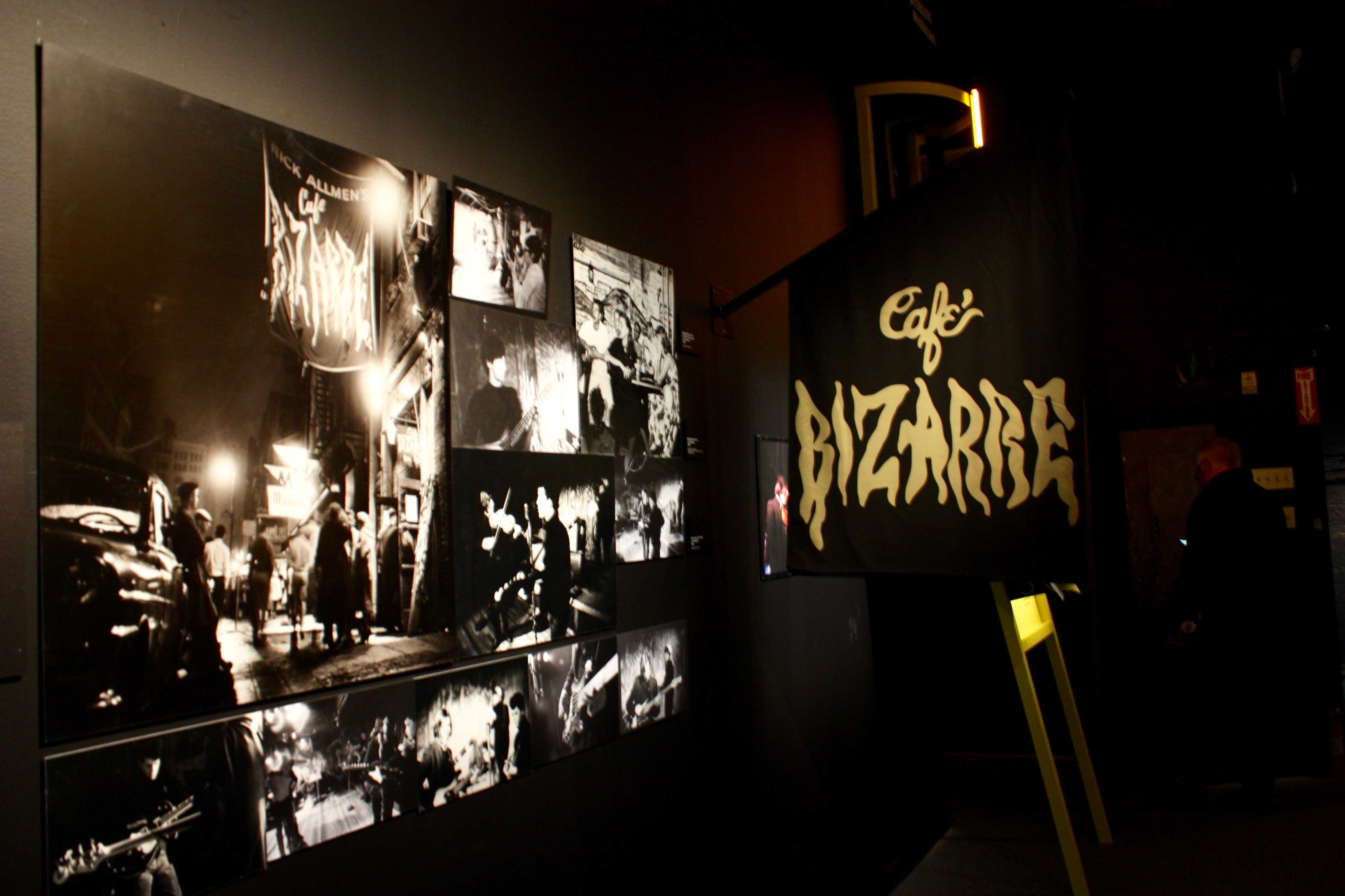Take a walk on the wild side and step back into the 1960s.
It was in 1964 that two musicians from vastly different backgrounds — one a Brooklyn-born rock ‘n’ roll zealot and the other a classically trained Welshman — met in New York City. Their names were Lou Reed and John Cale, and that meeting was the origin of the Velvet Underground.
Set against the backdrop of the revolutionary ’60s, the Velvet Underground Experience, a new exhibit that revisits and spotlights the band as a centerpiece of rock history, is a walk through the era that shaped the band and its lasting cultural impact. Nestled in a gallery at 718 Broadway, just minutes from NYU’s campus, the exhibit immerses you in the underground movements that came to fruition in the heart of Greenwich Village. It includes a Bandsintown Studio space in the sub-basement that will host various talks with experimental filmmakers, authors and music critics. Beginning Oct. 18, an up-and-coming musician, Adrian Jean, will be taking up residency in the studio, hoping to capture the same essence of soul as the Velvet Underground.
Displaying photographs, films and paraphernalia of artists like Allen Ginsberg, Jack Kerouac, Jonas Mekas and the band’s most notable collaborator Andy Warhol, the Velvet Underground Experience builds a portal into time that allows people to see the true birth of one of music’s greatest groups, and the period that produced it.
Christian Fevret, the co-curator and founder of French magazine “Les Inrockuptibles,” talks about what he hoped to achieve with the exhibit.

“It’s a real experience, an experience of freedom, a dive into this exceptional moment of creation,” Fevret said. “For us, it was important that it was not to be a nostalgic exhibition, where we would have fake New York. The idea was to have a contemporary point of view and to show how relevant the Velvets are today.”
The ’60s were a decade unlike any other. Sex, prostitution and psychedelic drugs — the themes that saturate the Velvet Underground’s albums — were taking over society, especially in the Village where numerous artists found experimentation with drugs to be a transcendence into elevated states of mind. This ushered in a new rebellion, both political and artistic, which cultivated fertile soil for creative minds to release the reins of constraint and push the limits of established boundaries. It is this movement that is at the core of the Velvet Underground Experience and the force that propelled the group into our present cultural lexicon.
The exhibition’s 12,000-square-foot space feels less like a massive, cold room and more like an intimate cavern that invites you to closely look at snapshots and films of the band’s members — a glimpse into lives otherwise shrouded in mystery. The exhibit manages to delve into every individual connected to the Velvet Underground. A separate chamber features Nico, the captivating singer who was brought on to their preeminent debut album, “The Velvet Underground & Nico,” by producer Andy Warhol. Her sonorous vocals command the tracks of “Femme Fatale,” “All Tomorrow’s Parties” and “I’ll Be Your Mirror.” It’s now difficult to imagine the album without her presence.
The Velvet Underground released their first album in 1967 and essentially dissolved in 1970 following Reed’s departure. Though the band continued to tour without Cale and Reed, it was never the same and in 1973, breathed its last. For a group that survived only three years, it managed to cement itself as the leading figure in the midst of musical and cultural transformation and is now universally lauded as one of the greatest bands in rock history.
However, the sound of the Velvet Underground was not welcomed by critics of the time. But like many artists destined to alter the course of history, their mind-bending entrance onto the stage came too soon.
“In New York City, in the avant-garde scene, there was a little bit of success, but absolutely no commercial success,” Fevret said. “[David] Bowie loved the Velvets and was very influenced by them and began to sing Velvet songs on stage. During the ’70s, the New York rock scene, with bands like Talking Heads, Television, Patti Smith, Blondie, considered the Velvet Underground as their main influence. The Velvets gave them a lot of strength to be themselves because they were telling everybody, ‘you don’t have to compromise, push the boundaries as much as you can to do your own art.’”
The exhibition is a mecca for music junkies whose drug is the hypnotic, psychedelic melodies orchestrated by the Velvet Underground. As you walk through the annals of the ’60s with tracks like “Heroin” and “Some Kinda Love” playing between the hallowed walls of the gallery, you’re reminded of the transformative, rare experience that the Velvet Underground’s music inflames in your soul.
The Velvet Underground Experience is open at 718 Broadway through Dec. 30.
A version of this article appeared in the Monday, Oct. 15 print edition. Email Daniella Nichinson at [email protected].























































































































































